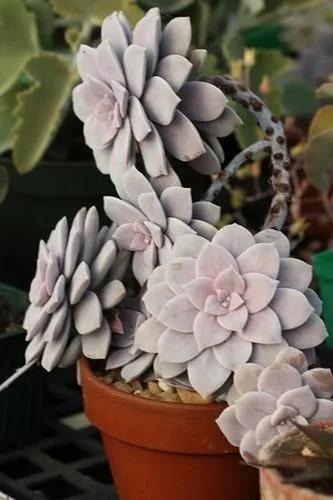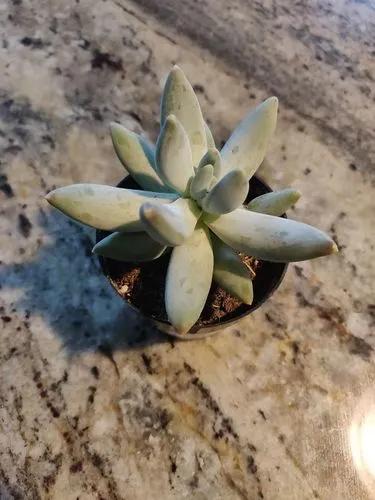The succulent leaves of most Agave species have sharp marginal teeth, an extremely sharp terminal spine, and are very fibrous inside. The stout stem is usually extremely short, which may make the plant appear as though it is stemless. Agave rosettes are mostly monocarpic, though some species are polycarpic. During flowering, a tall stem or "mast" ("quiote" in Mexico), which can grow to be 12 metres (40 feet) high, grows apically from the center of the rosette and bears a large number of short, tubular flowers and sometimes vegetatively produced bulbils (a form of asexual reproduction). After pollination/fertilization and subsequent fruit development, in monocarpic species, the original rosette dies. However, throughout the lifetime of many Agave species, rhizomatous suckers develop above the roots at the base of the rosette. These suckers go on to form new plants after the original rosette desiccates and dies. Not all agaves produce suckers throughout their lifetimes; some species rarely or never produce suckers, while others may only develop suckers after final maturation with inflorescence. Some varieties can live for 60 years before flowering
Agave Care
Agave genus



How to Care for the Plant

Water

Mature agave plants are very drought tolerant. You generally only need to water them if you've had a long stretch without rainfall and the soil is completely dry. However, when you are first establishing a plant, water it every four or five days for the first month. Then, water once a week, gradually spacing watering to every other week, depending on rainfall.

Pruning

Remove spent flower stalks at their point of origin as close to the main body of the plant as possible. Cut through the stalk at a slight angle with your pruning saw to encourage water runoff. Break it into manageable pieces and discard it into a green waste can.

Fertilizer

Feeding typically isn't necessary for agave plants. In fact, feeding encourages flowering, which you don’t want to happen too soon because most agave plants die after flowering.

Sunlight

Agave plants thrive in full sun throughout the year. In very hot climates they might need a bit of shade because harsh sun can burn their foliage. However, when grown indoors they should be by your brightest window, ideally a sunny south- or west-facing window.

Soil

Agaves grown in pots need a soil that will dry out slowly but offer good drainage. Use a combination of equal parts compost; good potting mix or garden soil; and either gravel, pumice, or sharp sand. Do not use peat moss; its acidity and its water-holding properties are not desirable for growing agaves.

Temperature

During the growing season, Agave plants like warm temperatures, while in winter, when resting, they like cooler temperatures. Most of them are only cold hardy in USDA hardiness zones 8a to 9b, 10 to 30 °F (-12.2 to -1.1 °C). A few species, like Agave parryi, are hardy down to USDA hardiness zone 5a, -20 °F (-28.9 °C).

Container

All container grown agave pants need a soil that dries slowly but drains quickly.

Additional

University of California Division of Agriculture and Natural Resources characterizes agave as being mildly toxic. It describes the plant as having oxalate crystals in its leaves, which can cause extreme irritation. Agaves are characterized by a rosette of succulent or leathery leaves that range in size from a few centimetres to more than 2.5 metres (8 feet) in length, depending on the species. Most bear spines along the edges and the tip of the leaf, for which they are occasionally confused with unrelated cacti.

Popularity

435 people already have this plant 19 people have added this plant to their wishlists
Discover more plants with the list below
Related articles






